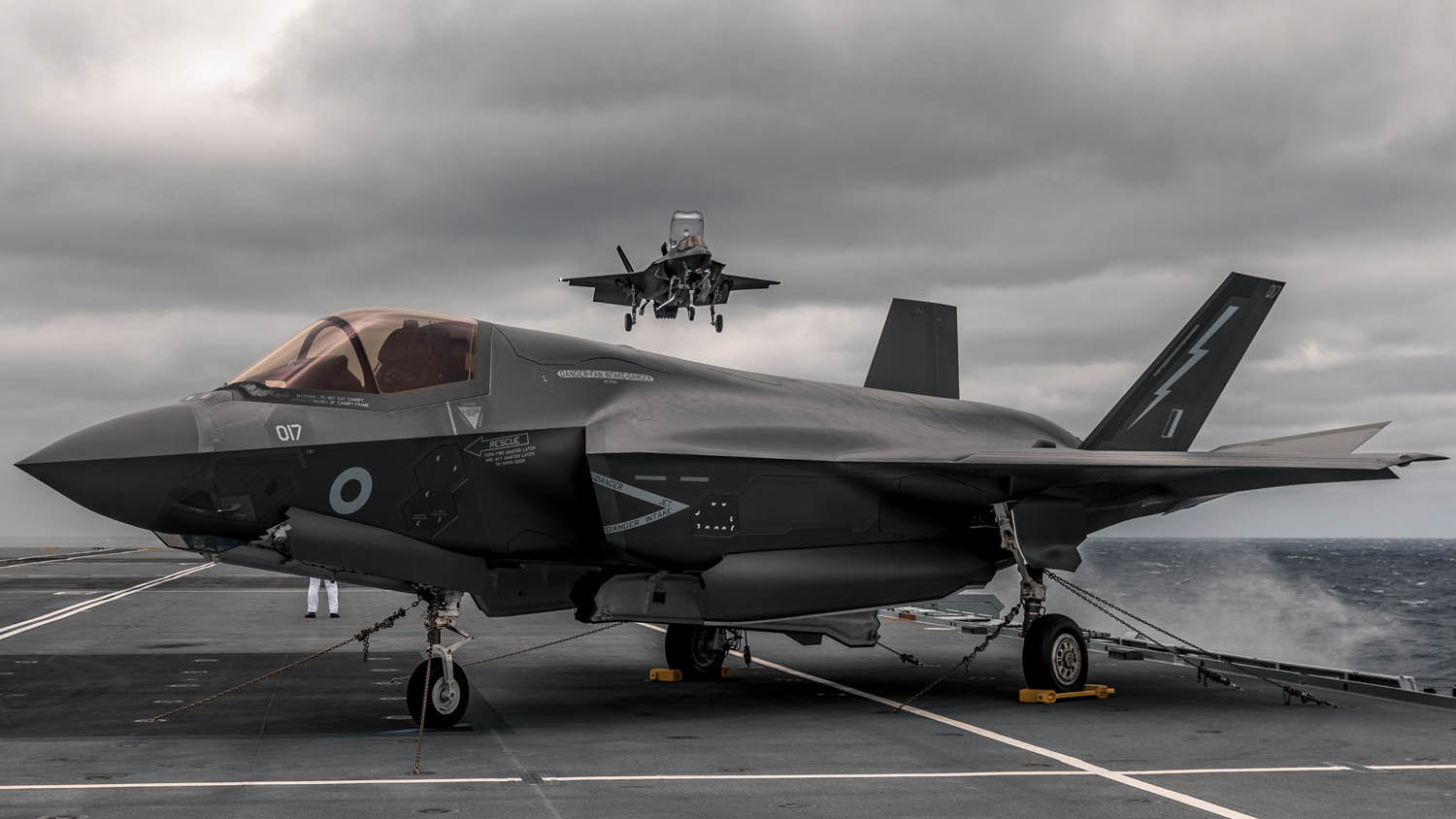A US Marine Corps F-35B has undergone ‘laser shock treatment’ that hardens the plane without adding more metal or weight. This would otherwise limit the jet’s fuel or cargo capacity, reducing its performance.
The United States Fleet Readiness Center East scored a milestone by successfully verifying the laser shock peening process and returning the first F-35B aircraft to the operational US Marine Corps fleet, US Navy said in a statement on January 3.
The procedures were carried out by the US Navy’s Fleet Readiness Center East (FRCE), an aviation repair and maintenance facility that took the first F-35 in June 2020.
“The laser shock peening modification is essential to extending the life of the F-35B STOVL [short take-off and vertical landing] variant, and the ability to complete this procedure successfully allows FRC East [Readiness Center East] to support this critical workload,” Commanding Officer Col. Thomas A Atkinson said.
Laser Peening Process
During laser peening, a high-energy laser beam is fired at the metal, which creates an area of plasma on the metal’s surface. The impact creates a shock wave, which travels through the metal, and compressive residual stresses remain.
This compression helps improve the metal’s damage tolerance, fatigue life and strength, leading to a more durable product.
Verification of the laser shock peening process ensures quality control upon inspecting whether the jets fulfill system requirements through a combination of tests, analysis, demonstration, and testing. According to the navy, the entire verification procedure required over 15,000 hours of labor.

The process extends the life of the fifth-generation F-35B fighter, which is the STOVL model flown by the US Marine Corps. In August 2019, FRCE finished the construction of a $6 million laser shock peening facility.
The center is now the first in the world to be able to execute laser shock peening on an F-35. In Utah, the navy intends to establish a second similar facility.
“The big picture here is that we set up a capability that has never been stood up before,” the statement quoted Jeanie Holder, the F-35 Joint Program Office induction manager at FRCE as saying. “We made STOVL history by completing verification of the laser shock peening procedure on the first Marine Corps aircraft inducted for the modification and returned to the fleet.”
Since 2013, the facility has served as a major site for F-35B Lightning II maintenance and upgrades. In addition, the F-35A’s conventional take-off and landing, as well as the F-35C’s carrier operations, were tested at the center.
F-35B Stealth STOVL Jet
The F-35B is the world’s first stealth aircraft with supersonic speeds and STOVL capability. The aircraft was designed and developed by Lockheed Martin.
In 2006, the F-35B underwent a Critical Design Review (CDR), and in December 2007, it was deemed STOVL competent. From 2009 until its maiden flight in April 2012, it was evaluated for STOVL capabilities.
Pratt & Whitney Turbofan engines power the aircraft, which can reach Mach 1.8 speeds and has a maximum takeoff weight of 27,216 kg.
Like the other two F-35A and F-35C types, the F-35B stands 4.6 meters tall, 15.4 meters long, and has a 10.6-meter wingspan. Its smart munitions include two Joint Direct Attack Munitions (JDAM), two AIM-120 Advanced Medium-Range Air-to-Air Missiles (AMRAAM) and a 1,000-pound precision air-to-surface munition.
The F-35B’s engine is efficiently connected with a shaft-driven STOVL propulsion system designed by Rolls Royce Defense, which can provide over 20,000lbs of thrust. Doors mounted above and below the vertical fan open as the fin spins up for vertical lift of the aircraft.
The F-35B is equipped with Northrop Grumman’s AN/APG-81 Active Electronically Scanned Array (AESA) multi-functional radar. It also includes the AN/AAQ-37 Distributed Aperture System (DAS), Barracuda AN/ASQ-239 electronic warfare system, MADL communication system, and missile warning system.
The aircraft is outfitted with a refueling probe on the right side of the front fuselage for mid-air refueling. The aircraft’s primary engine features a three-bearing swiveling exhaust nozzle, which is augmented with two-roll control ducts on the inboard section, which, along with the vertical lift, provides STOVL capability.
- Contact the author at ashishmichel@gmail.com
- Follow EurAsian Times on Google News